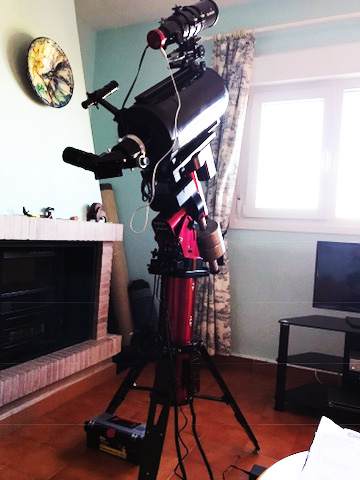The Minor Planet Juno
 Sunday, December 21, 2014 at 8:50AM
Sunday, December 21, 2014 at 8:50AM Discovery
From the Lancaster Gazette of 11th May 1805
ASTRONOMY. Another new planet has been discovered by M. Harding, of Lilienthal, near Bremen, to which he has given the name of Juno. It is of the eighth magnitude, and attracted his attention while comparing with the heavens the 50,000 stars observed by Messrs. Lalande. It appeared to have a peculiar motion, and after observing it for several days, he clearly ascertained that it was a planet. Its right ascension on the 5th of September was 1° 52, its north declination 0° 11. The same planet was observed by M. Burckhardt, on the 23d of Sept. at 3-9* 7 4° 6, from which he inferred that the dura- tion of its revolution is five years and a half. The following particulars have also been ascertained : its inclination is 21". Its eccentricity is a quarter of its radius. Its mean distance from the sun is three times that of the earth, or about 100 millions of leagues ; it is consequently farther than Ceres, or Pallas, whose distance is 96,000,000. Its diameter has not yet been ascertained ; but its size appears nearly tbe same as that of Ceres, or the planet discovered by Piazzi. This is the twelfth planet discovered within a few years, Herschell having discovered Uranus and its six satellites, and two new satellites to Saturn : Piazzi discovered Ceres, and Olbers discovered Pallas. M. Piazzi, the celebrated Astronomer of Palermo, has ascertained a change on the fixed stars of one, two, and three seconds, on account of the situation of the earth in its orbit. This effect of the annual parallax, concerning which disputes have existed for more than a century, is considered of great interest to men of science.
Current Position and Brightness
Juno is currently in the constellation of Hydra as shown in the chart below. It has a magnitude of 8.61.
Object Name: 3 Juno
Object Type: Asteroid (Small Database)
Altitude: +30° 05' 48"
Constellation: Hydra
RA (Topocentric): 08h 59m 04s
Dec (Topocentric): +00° 20' 55"
RA (2000.0): 08h 58m 16s
Dec (2000.0): +00° 24' 34"
Azimuth: 140° 57' 54"
Magnitude: 8.61
Rise Time: 20:59
Transit Time: 03:07
Set Time: 09:12
Hour Angle: -02h 12m 04s
Air Mass: 1.99
Earth Distance (au): 1.43
Sun Distance (au): 2.20
RA Rate (arcsecs/sec): -0.002579
Dec Rate (arcsecs/sec): -0.000203
Date: 22/12/2014
Time: 00:55:43 STD
Constellation (Abbrev.): Hya
Screen X: 363.67
Screen Y: 250.22
Epoch Month: 12.0000
Epoch Day: 22.0387
Epoch Year: 2014.0000
Mean Anomaly: 36.0177
Eccentricity: 0.2555
Semi-Major Axis: 2.6708
Inclination: 12.9818
Long. of the Ascending Node: 169.8701
Longitude Perihelion: 248.4136
Ecliptic: 1.0000
Magnitude 1: 5.3300
Magnitude 2: 0.3200
Heliocentric Longitude: 2.1°
Heliocentric Latitude: -0.2°
Heliocentric Radius: 2.2025
Phase Angle: 19.7265
Sidereal Time: 06:47
Julian Date: 2457013.53869795
Click Distance: 0.0000
Celestial Type: 37
Index: 0
Text Record Start: 0
Constellation Number: 41
 [Your Name Here] | Comments Off |
[Your Name Here] | Comments Off | 







